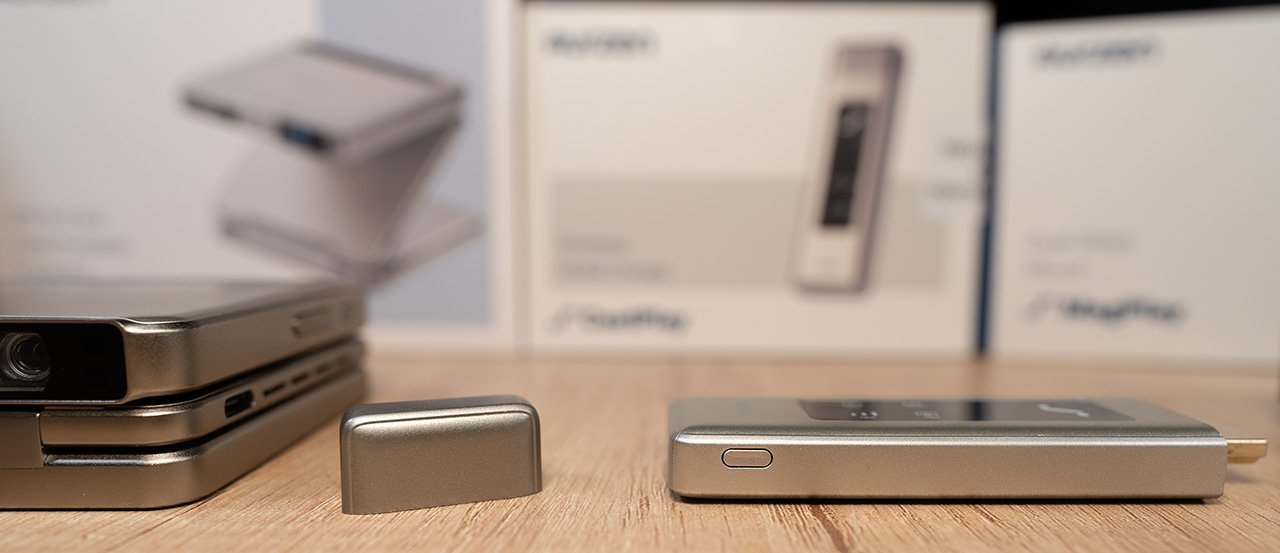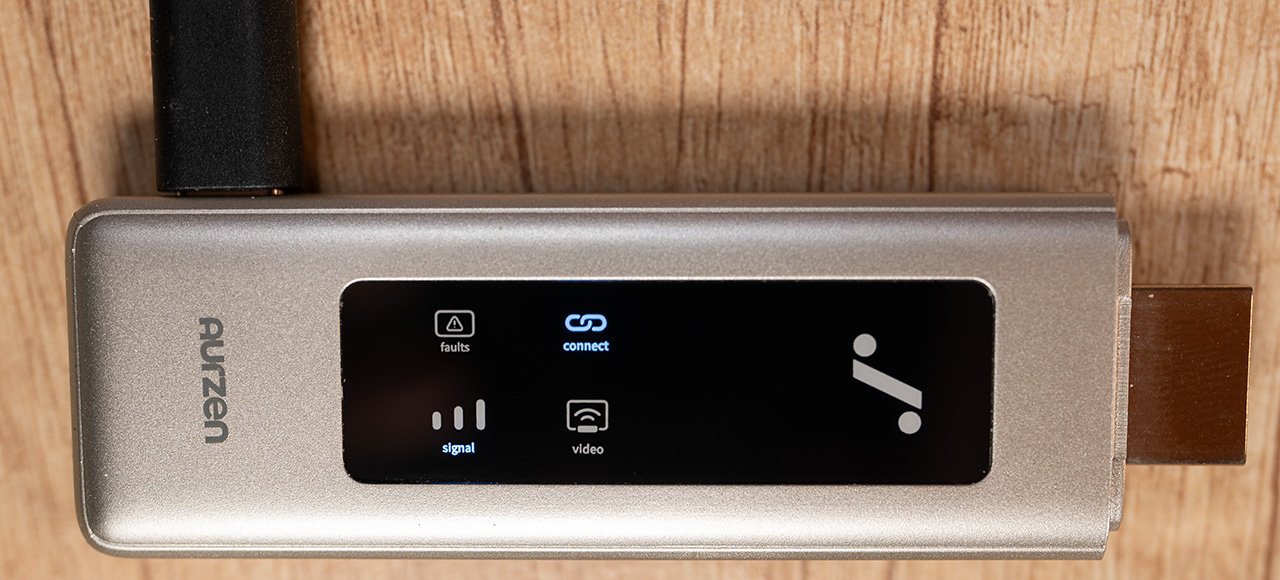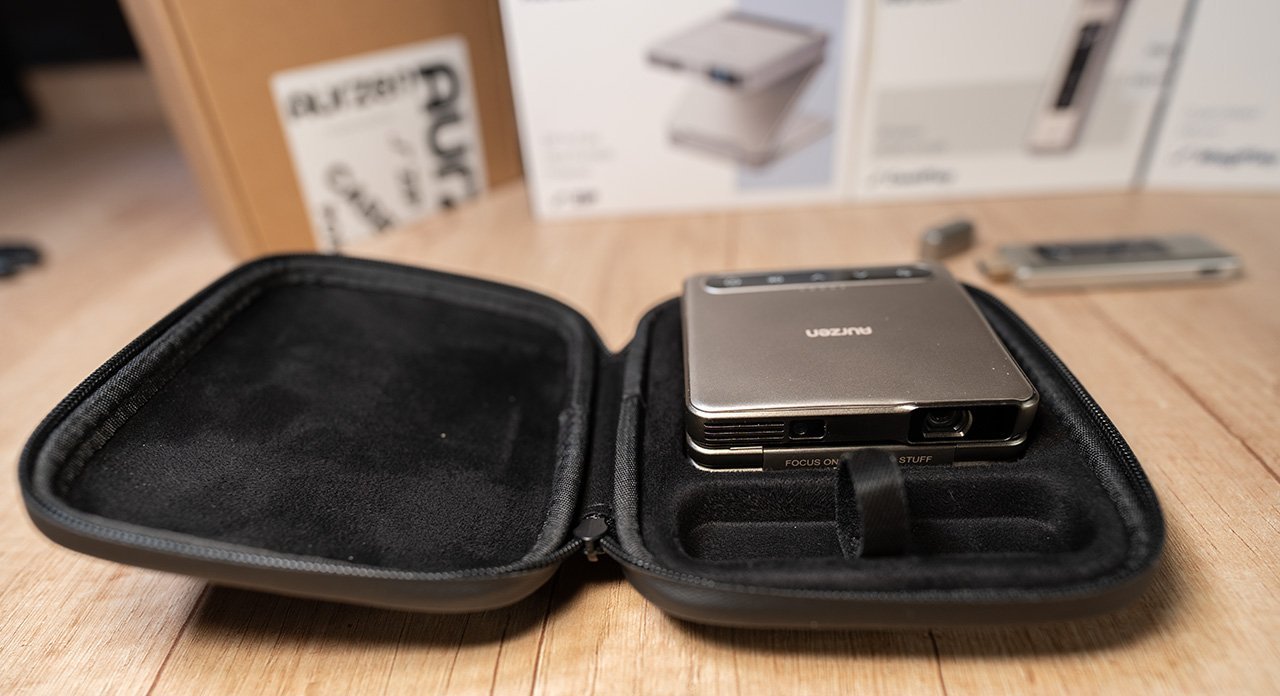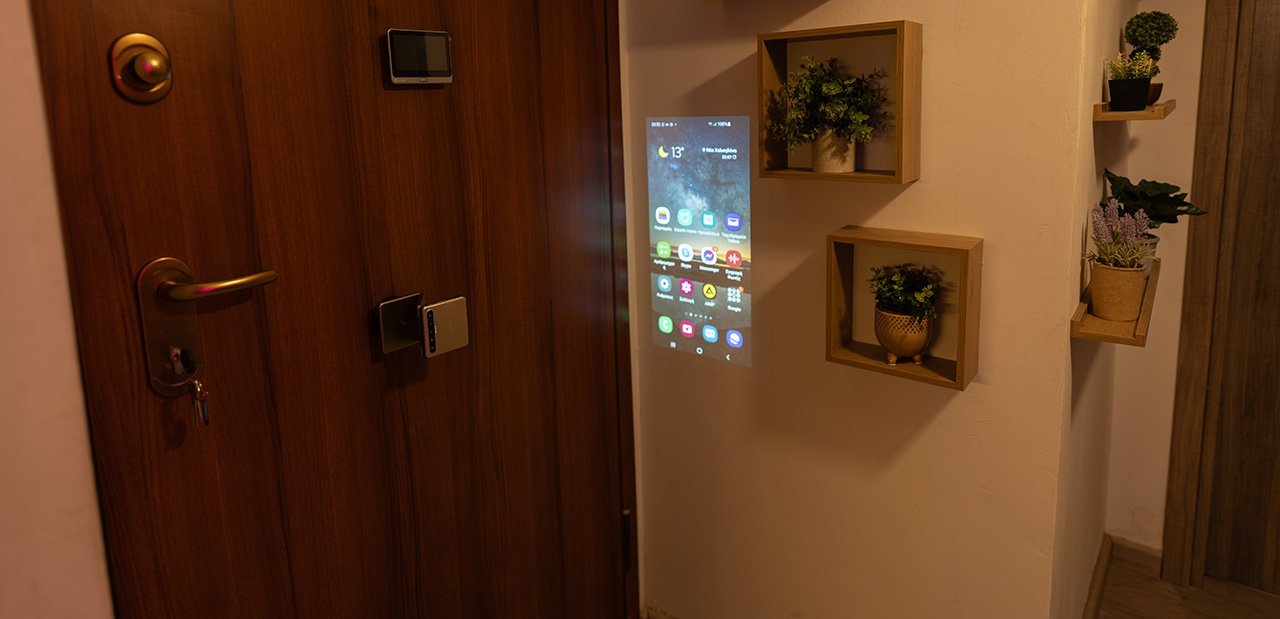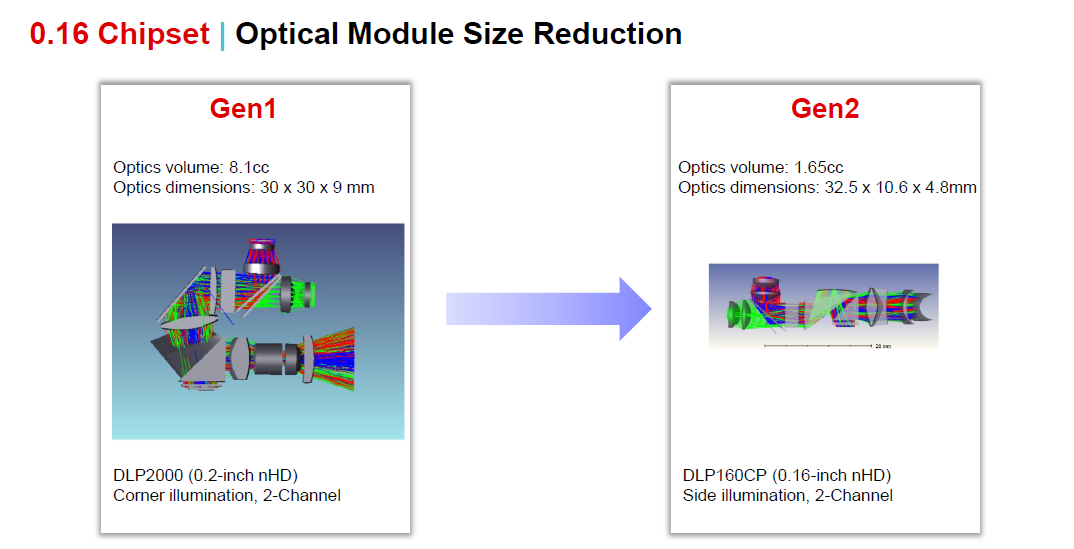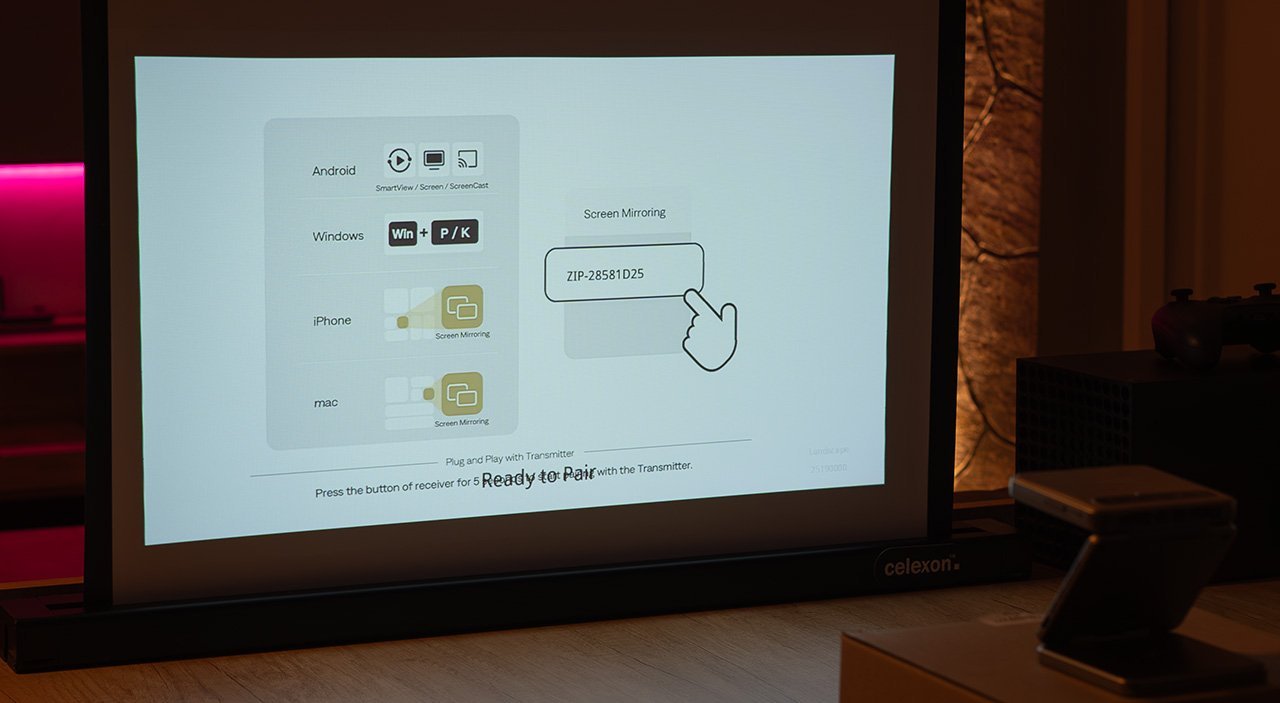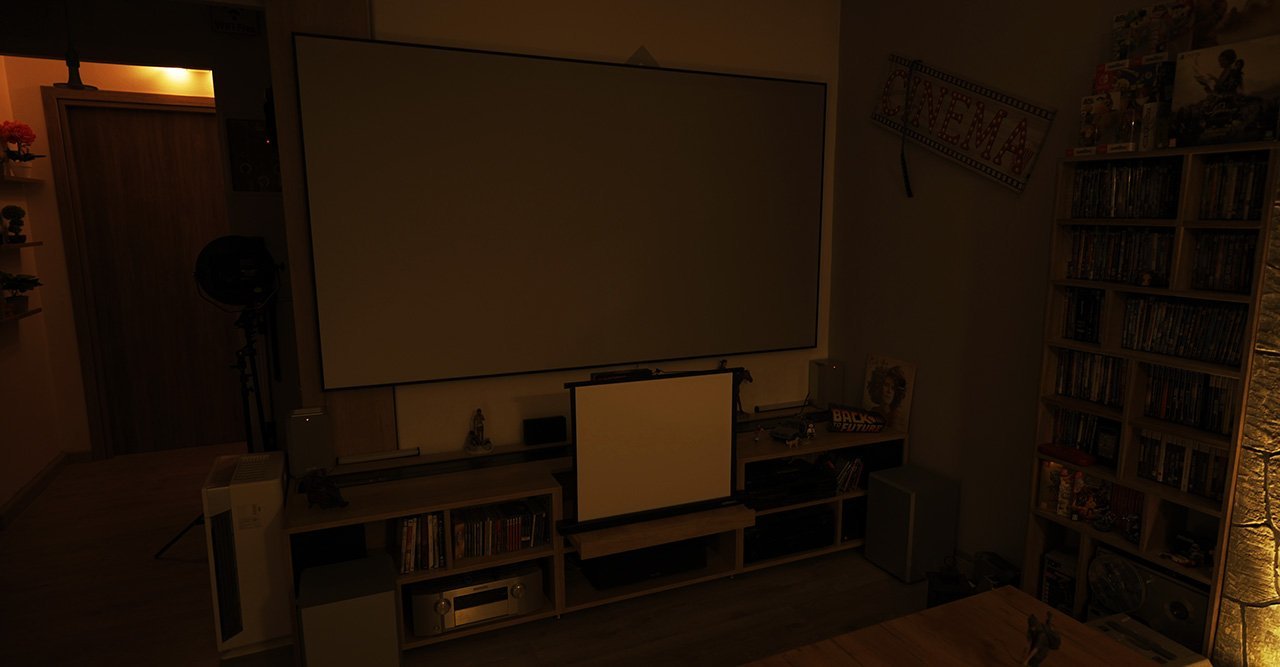My passion and love for the hobby of video projection, and for exploring the evolution of technology in general, is I believe, undeniable.
Every time I get my hands on a technologically advanced product in the field of video projection, I am thrilled. Not only because I have the opportunity to test it, use it and have fun with it, but also because I often witness first-hand remarkable leaps in technological progress.
Recently, I witnessed this technological evolution with the amazing Valerion VisionMaster projector series and its truly unique Fresnel screen, which left me speechless with its performance.
Just when I thought I had seen it all and that nothing could surprise me anymore — boom, it happened again!
Approximately 2–3 months ago, I received an email from Aurzen. They kindly praised the quality of my reviews (thanks for the kind words, guys!) and expressed interest in sending me a unique product they were planning to showcase at CES 2025, something they thought I might be interested in.
The product was an engineering sample of a tiny foldable projector called ZIP, that had about 80% of the functionality of the final version and would be released on Kickstarter in a few months.
My response was positive (i was so curious!), and after some time a small box with a “prototype” sticker on it, was delivered to my door.
And here it is, Ladies and Gentlemen the ‘Mystery Box’ from Aurzen!
Unpacking and first look
Inside this mystery box i discovered another four small boxes, the Zip projector of course, and its entire dowry!
- The ZIP Pico Projector
- A carrying case
- An HDMI dongle
- A magnetic suction cup (yes, you read that right, a suction cup!)
Despite the initial shock at its incredible size, the ZIP looks and feels like a normal but shrunken projector.
It has an electrically adjustable lens, a TOF sensor for automatic focus adjustment and automatic keystone correction, and stereo speakers.
And don’t forget. Focus always on the good stuff!
With foldable technology now firmly established in smartphones, it’s exciting to see it applied to projectors as well. The mechanism connecting the three “layers” is sturdy and of high quality.
The ZIP has five automatically illuminated (when touched) touch buttons on the top with which the user can operate it. The button on the far right activates the autofocus function when pressed.
The foldable design offers great versatility in positioning the projector. There are two buttons on the right-hand side, one for switching the ZIP on and off and a larger one for adjusting the volume.
- The top layer houses the main projector, including the DLP optical block, the LED light source, and the control buttons.
- The middle layer features the USB-C port and the stereo integrated audio system.
- The bottom layer is a 5,000mAh battery with a magnetic base, allowing the ZIP to attach securely to metal surfaces or its dedicated suction cup.
Also there is a small switch for low and full brightness mode.
There is an elastic anti-slip film on the underside of the ZIP, which ensures that the ZIP remains stable even if the surface on which it is placed is very slippery, such as a glass table.
The size of the ZIP is almost comically small, about half the size of a typical smartphone! Isn’t it absolutely adorable?
Of course, if you want it to look more ‘imposing,’ you can simply unfold it!
The supplied HDMI dongle enables the wireless transmission of HDMI signals to the ZIP. It’s an optional accessory, but I think very few will really need it, as wireless connectivity with Android and iOS devices is exactly what everyone will ever need from a projector of this type.
However, Aurzen has also anticipated the HDMI scenario, always wireless of course.
Simply hold the side button for five seconds to establish a connection, and data transmission starts seamlessly, exactly as if we using a traditional HDMI cable.
It’s funny to notice that even this tiny dongle has so much detail on it. Illuminated indicators for literally everything.
The case is exceptionally well made, both in terms of quality and feel. In all the days (almost two months now) that I’ve been carrying the ZIP around with me on a daily basis, I’ve always had it in this case.
And why Nikos, do you carry the ZIP around with you every day? Has it really become that useful to you?
Guys, it’s not just about how incredibly useful and indispensable it has become for me, but basically I enjoy watching the reactions of everyone I show it to!
The moment I take it out of my pocket and turn it on, the looks and expressions on people’s faces are absolutely hilarious, I’ve had so much fun with it.
The inside of the case is lined with a soft, plush material and has dedicated compartments for the ZIP projector and its charging cable.
Speaking of the USB-C charging cable, this is not ‘just’ a simple cable either. It is a shielded and fabric-covered fast charging USB-C cable. Every detail in this package screams high quality.
Now let’s move on to the suction cup, my favorite accessory! Aurzen calls it “MagPlay”.
When I first unpacked it, I assumed it was just a normal suction cup with a magnetic attachment to which the ZIP can be attached. It also has a button to release the vacuum seal so that it can be easily detached from surfaces. So far, so good.
However, when I took a closer look at it, I noticed something unexpected: a USB-C port. What the.
Curious, I opened the instruction manual that came with it, and that’s when it hit me: I was actually reading an instruction manual for a suction cup. Seriously? Instructions on how to use a suction cup? Please!
To my surprise, this isn’t just any suction cup, it’s an electronic suction cup.
This electronic suction cup “MagPlay” has an integrated air vacuum pump and a built-in lithium battery that needs to be recharged.
To activate it, you need to hold the release button for six seconds. A small LED on the underside indicates the status (on/off). The highlight? The suction cup automatically activates the pump and regulates the vacuum pressure as soon as it is attached to a surface.
If the vacuum between the suction cup and the surface decreases for any reason, the pump is automatically reactivated to restore the vacuum, ensuring a secure hold as long as the suction cup is attached to the surface. As soon as the vacuum has reached the correct level, the pump switches off automatically each time.
I was really impressed with the intelligence of this design. Wherever you place it, you can be completely confident that it will hold the ZIP firmly in place and effortlessly support its weight for as long as necessary.
Where you place your ZIP with the “MagPlay” suction cup, is limited only by your imagination.
Lets talk about the specs and the technology behind this tiny foldable projector
The ZIP is an HD pico projector with DLP technology, offering a 720p resolution. It also features a ToF sensor for auto-focus and keystone correction (!), along with a high-brightness mode that can be activated using the switch I showed you earlier.
In addition, it comes equipped with two speakers on either side, a built-in 5000mAh lithium battery (providing approximately 1.5 hours of projection), as well as wireless connectivity via Wi-Fi and Bluetooth.
Its brightness is rated at 100 ANSI lumens, and its on/off contrast is 300:1. It’s also worth noting that it uses LED as light source.
These are the specifications as listed on Aurzen’s official website.
The size of the ‘package’ in which Aurzen has managed to fit all this amazing technology is incredibly small, so small that it truly makes you wonder how they even managed to do it!
Behind the technology of this amazing tiny projector is none other than the well-known Texas Instruments and its widely recognized DLP technology.
Aurzen has equipped the ZIP with the smallest DMD chip in the world, the second-generation 0.16-inch DMD chip. This chip is Texas Instruments’ ‘favorite child’ and represents the next evolution of the well-known (on pico market) 0.2-inch chip that had been on the market for years.
The native resolution of this DMD chip is 640×360, and in the case of the Zip, it doubles to 1280×720 using the XPR (pixel shifting) technology we know from 4K DLP projectors.
This particular 0.16-inch DMD chip, combined with the advanced 8-bit mini controller DLPC3421, achieves incredibly high frame rates of up to 360Hz.
This tiny 0.16-inch DMD chip is built with 5.4μm architecture and can work with any light source—laser, LED, or even a high-pressure lamp.
In the case of ZIP, Aurzen chose the LED path, using a 2-channel LED light source with green and red LEDs. The blue color is generated by blending these two colors.
Perhaps the greatest revolution introduced by this new 0.16-inch DMD chip is its capability for ‘side illumination’ in the DLP optical block, instead of the ‘corner illumination’ used in the previous generation. This results in an overall reduction of over 80% in the size of the optical block, making it possible to create an innovative super-small projector like the ZIP.
Honey, i shrunk the projector
There is no room in this review for measurements, image parameter analyzes, etc. These are not aspects that concern the ZIP as you may understand, because it is not a typical projector designed to serve its duty in a home theater or mounted in a corporate conference room. I tested the ZIP the way a tech gadget projector— like this should be tested – by simply having fun with it.
For testing the ZIP, I used a small 30″ desktop screen from Celexon. The throw ratio of the ZIP is almost 1:1, meaning the distance you place it from the screen is roughly equal to the width of the image it projects.
The ZIP’s menu doesn’t include image parameters, color settings or other features you’d expect from traditional projectors, and rightly so, in my opinion.
The menu includes an option to manually adjust the focus in case the autofocus doesn’t meet your expectations, although I never had to use manual focus myself. You’ll also find options to enable auto keystone correction and access basic settings, such as language selection and firmware upgrades via USB. That’s all.
On the welcome screen we have three options: Access the settings menu (as shown above), connection via Bluetooth, or access the screen mirroring submenu.
In the Screen Mirroring section you can find instructions on how to seamlessly share the screen of your cell phone or even your Windows PC or Mac with ZIP.
Unfortunately, I was never able to mirror the screen from my iPhone, so I turned to my favorite Samsung Android device to test the ZIP. Android always wins! Sorry iFans 🙂
I also tested screen mirroring with my Windows PC, and it worked flawlessly.
As expected, the mirroring is accompanied by a slight delay and a reduced refresh rate compared to the phone. The colors are also nowhere near the saturation of the phone’s AMOLED panel.
The screenshot below also shows part of a 32-inch monitor on the right, so you can compare the brightness of the ZIP.
If you rotate your phone to landscape mode and adjust the screen mirroring settings to display in full screen mode on the ZIP instead of the phone (remember: most phones do not have a 16:9 screen ratio), you can take full advantage of the ZIP’s entire DMD chip area.
If we want to make full use of the resolution of the DMD chip with our phone in portrait mode, all we have to do is turn the ZIP into “portrait” mode and automatically rotate the image.
The difference in brightness between low and full brightness mode, which can be selected with the small switch reminiscent of the classic mute switch found on iPhones up to iPhone 15, is as follows.
Low brightness mode
Full brightness mode
It’s worth noting that the ZIP has an internal fan to cool the optical pico DLP unit, and if the projector is operated at full brightness for an extended period of time, it’ll start to make noise as the projector heats up. It’s not too annoying, but you can definitely hear it.
The next test was to show the limits of the ZIP’s capabilities by running it with the lights fully on in the room. Not only that, I added extra lighting to make the projection as difficult as possible. Here is the result.
I couldn’t resist setting up the mini Celexon screen next to the 100″ Fresnel screen, so I did it! “What are you doing, Nikos?” I thought to myself for a moment…
And I didn’t just do it, I turned on the Valerion VisionMaster Pro 2 and used the ZIP in a shootout! The screenshot you see below is an excerpt from the video I recorded.
I wanted to show you what 100 ANSI lumens looks like, not make a comparison between the two projectors, as I’m sure you can understand.
I conclude my review of the ZIP with a comment on its audio performance. The ZIP is equipped with two 1 W speakers located on either side of the middle layer. Both the volume and the sound quality are really impressive.
When I heard it for the first time, I was shocked. Not only is the stereo sound louder and higher quality than that of my iPhone, but thanks to the speakers on both sides and ample space for good resonance, the sound is rich and spreads effectively throughout the room, resulting in an excellent performance.
You can hear the ZIP clearly even in a noisy environment.
The only negative thing I can attribute to ZIP is the significantly shorter battery life compared to the technical specifications. After a full charge and used at full brightness, the battery only lasted 48 minutes.
The good news is that not only does the ZIP support fast charging (you need a 12V 2A fast charging power supply), but you can also plug it into any power bank while it’s running and charge it at the same time.
Note: The power bank must be capable of delivering 2A output power, otherwise the ZIP will not charge while running.
If you use a standard power supply during the charging process (a classic 5 V USB-C power supply – up to 10 W), you will see the 5 white LEDs on the top light up one after the other, first flashing and then lighting up constantly as the charging process progresses. If you are using a fast charger (>2A 12V USB-C fast charging adapter), the first LED will immediately light up green, indicating that fast charging is in use.
Everything about the operation of the ZIP is so well thought out, hats off to Aurzen for this outstanding design and execution that takes into account even the smallest details when operating the ZIP.
Here’s a short video I’ve prepared, as I do with every review, so you can enjoy this little marvel of projection technology in action. Have fun with it!
My thoughts for the ZIP
As you can imagine, I have dealt with countless projector models over the last 20 years. The ZIP is a unique case, I would describe it as the projector you don’t think you need, until you hold it in your hands.
ZIP is not only an amazing gadget that brings smiles and surprised faces to those around you when you take it out of the case and turn it on, but it’s also a practical foldable pico projector that does exactly what it promises.
Basically, the ZIP acts as a super-portable, enlarged extension of your phone screen wherever you need it. From quickly presenting a powerpoint at a client’s office to viewing photos or videos over a beer at a friend’s house in the evening, the possibilities and uses of the ZIP are truly endless!
The brightness of 100 ANSI lumens is more than enough for the kind of use ZIP is design for, and the built-in 5000 mAh battery really frees up your hands and makes the ZIP an exceptionally portable mini projector.
Forgetting for a moment that we are talking about a projector here, I would say that the ZIP is one of the most fascinating gadgets I have ever owned. It’s worth it for the experience alone, even if you don’t plan to use it daily.
There is currently a Kickstarter campaign running for the ZIP. If anyone would like to back this project and become an owner, here is the link. The price of $249 for backers is, in my opinion, remarkably low for such an advanced tech gadget projector.
Personally, I’ve already become a backer for the ZIP because I need a second one to gift to my mom, who uses her phone to look up recipes online every time she’s cooking something “special” in her kitchen. I couldn’t think of a better gift than this tiny foldable and battery-powered projector for this purpose. I’m already looking forward to the moment I demonstrate her gift, the surprise on her face will be priceless!
Lastly, I should mention that the ZIP will be available in two colors: Titanium Gold and Black.
Until our next article, make your life more exciting by enjoying your personal home cinema to the fullest!
And always remember to..
Nikos Tsolas















